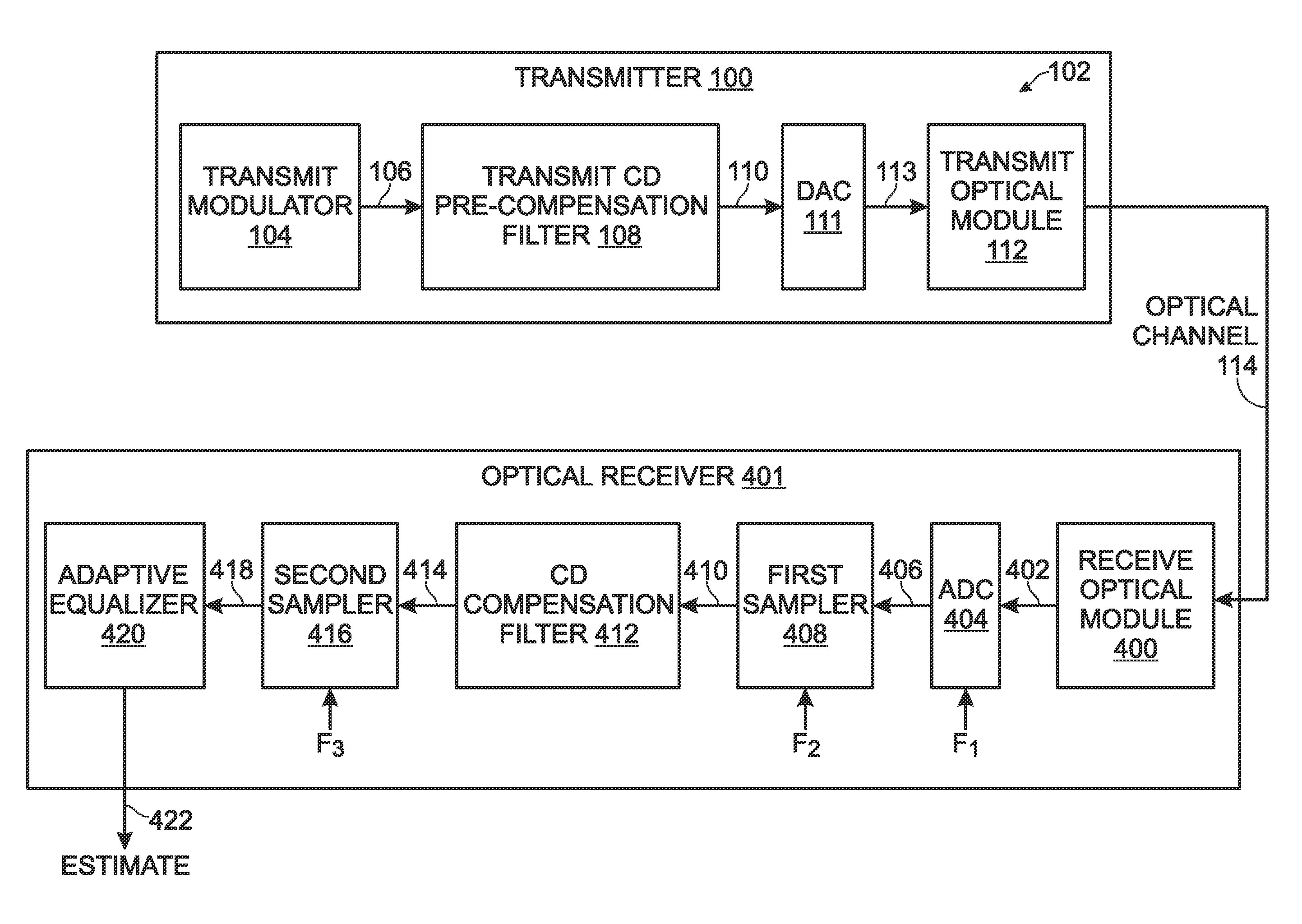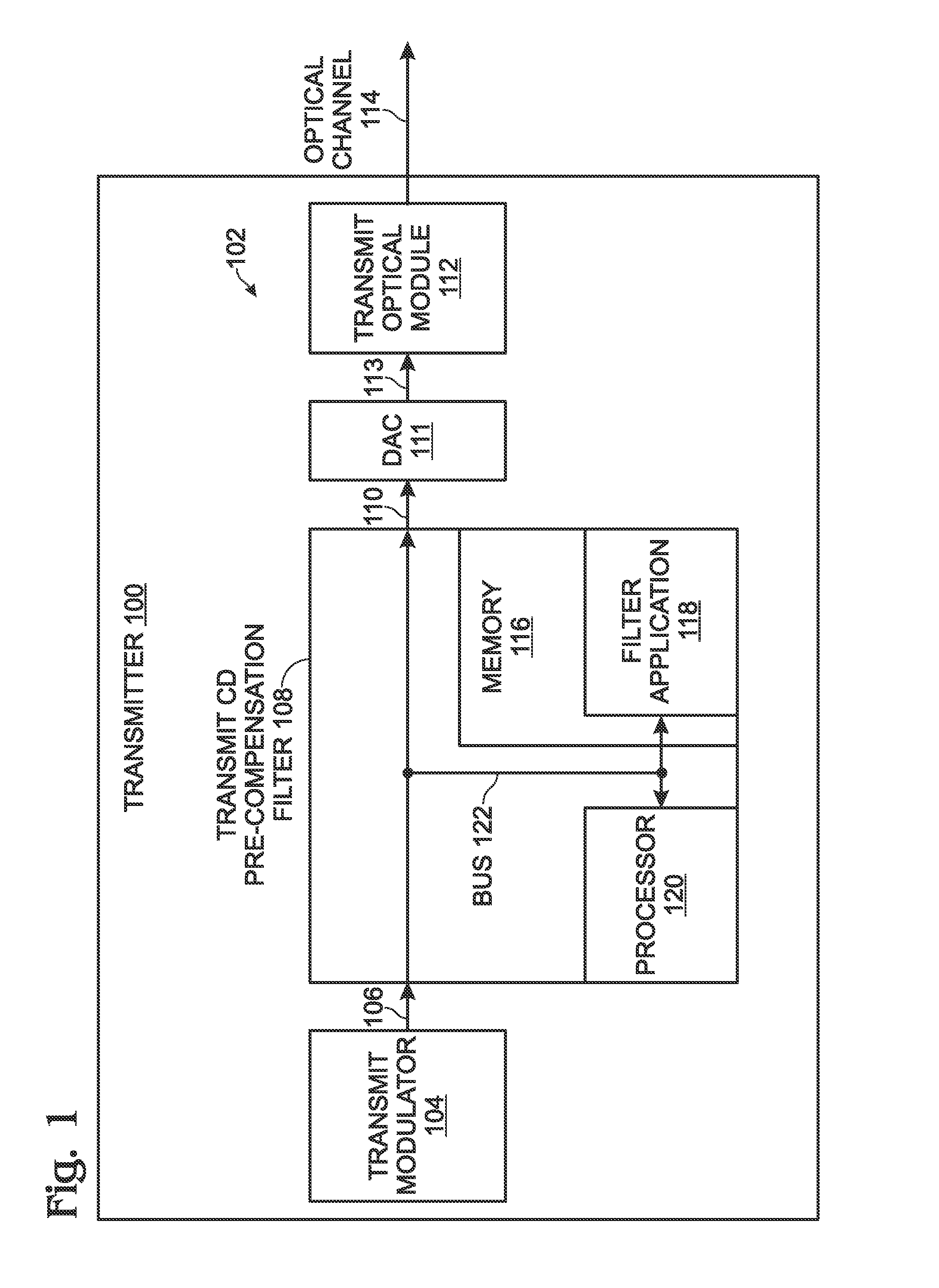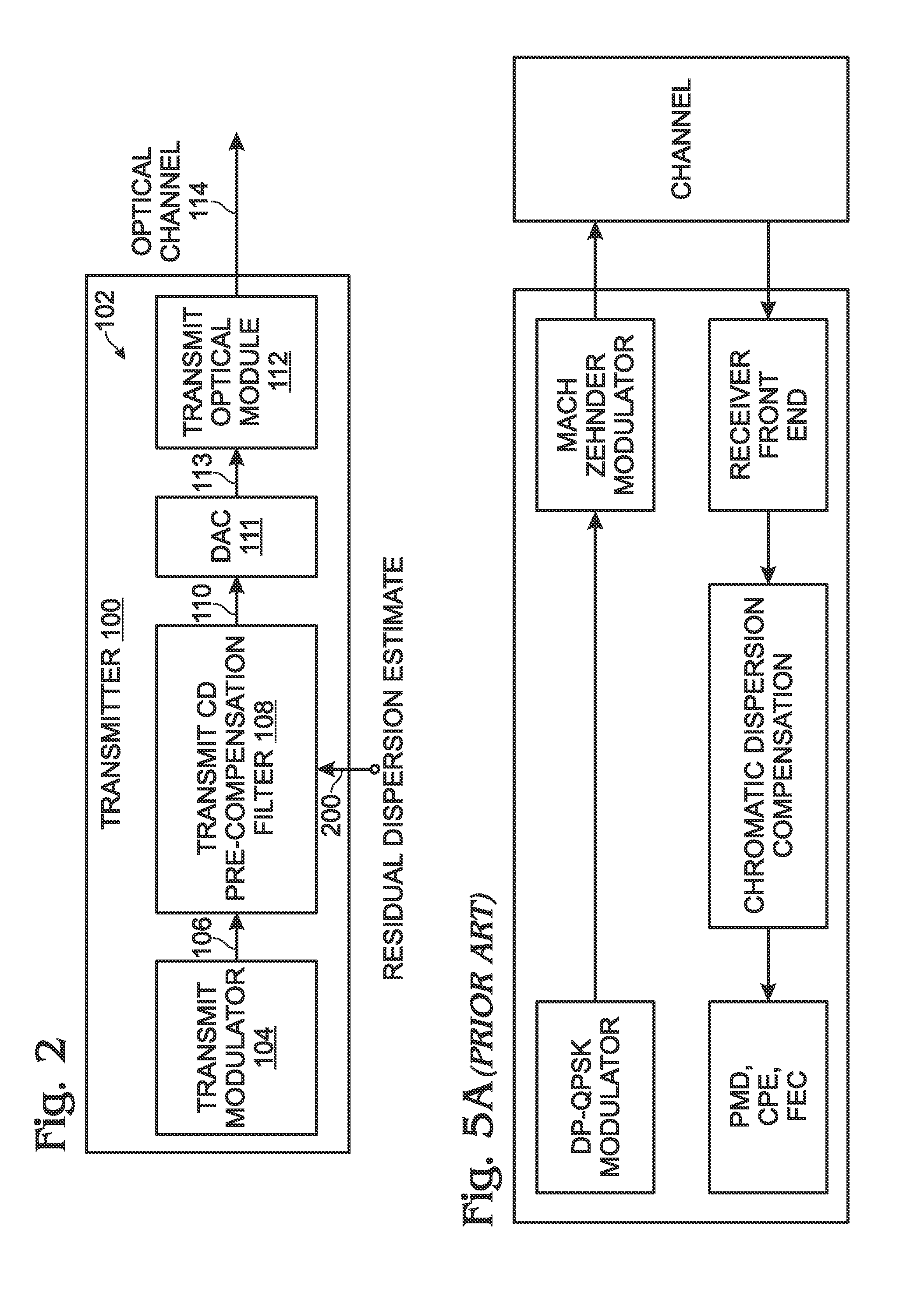Chromatic dispersion pre-compensation
- Summary
- Abstract
- Description
- Claims
- Application Information
AI Technical Summary
Benefits of technology
Problems solved by technology
Method used
Image
Examples
Embodiment Construction
[0057]FIG. 1 is a schematic block diagram of a first optical transmitter 100 with a system for performing chromatic dispersion (CD) pre-compensation. The system 102 comprises a transmit modulator 104 having an output on line 106 to supply a first electronic signal. A transmit CD pre-compensation filter 108, built from a CD compensation estimate, has an input on line 106 to accept the first electronic signal. The transmit CD pre-compensation filter 108 processes the first electronic signal and supplies a pre-compensated first electronic signal at an output on line 110. A transmit optical module 112 has an input to accept the pre-compensated first electronic signal and an output for transmitting the optical signal to a first optical receiver (not shown) via an optical channel 114. In one aspect, the transmit optical module 112 is a Mach-Zehnder modulator, and a digital-to-analog converter 111 (DAC) is interposed between the transmit CD pre-compensation filter 108 and the Mach Zehnder ...
PUM
 Login to View More
Login to View More Abstract
Description
Claims
Application Information
 Login to View More
Login to View More - R&D
- Intellectual Property
- Life Sciences
- Materials
- Tech Scout
- Unparalleled Data Quality
- Higher Quality Content
- 60% Fewer Hallucinations
Browse by: Latest US Patents, China's latest patents, Technical Efficacy Thesaurus, Application Domain, Technology Topic, Popular Technical Reports.
© 2025 PatSnap. All rights reserved.Legal|Privacy policy|Modern Slavery Act Transparency Statement|Sitemap|About US| Contact US: help@patsnap.com



